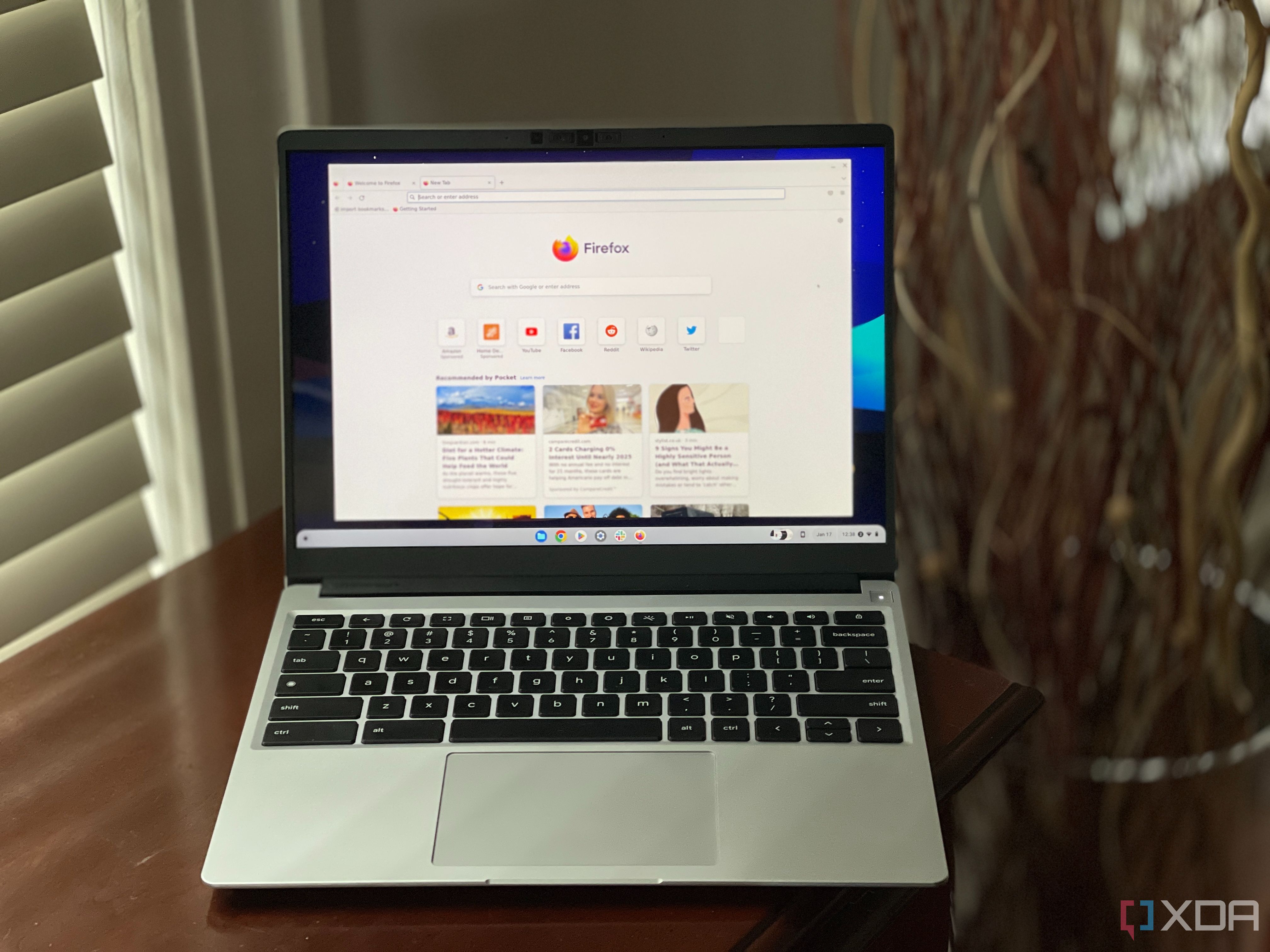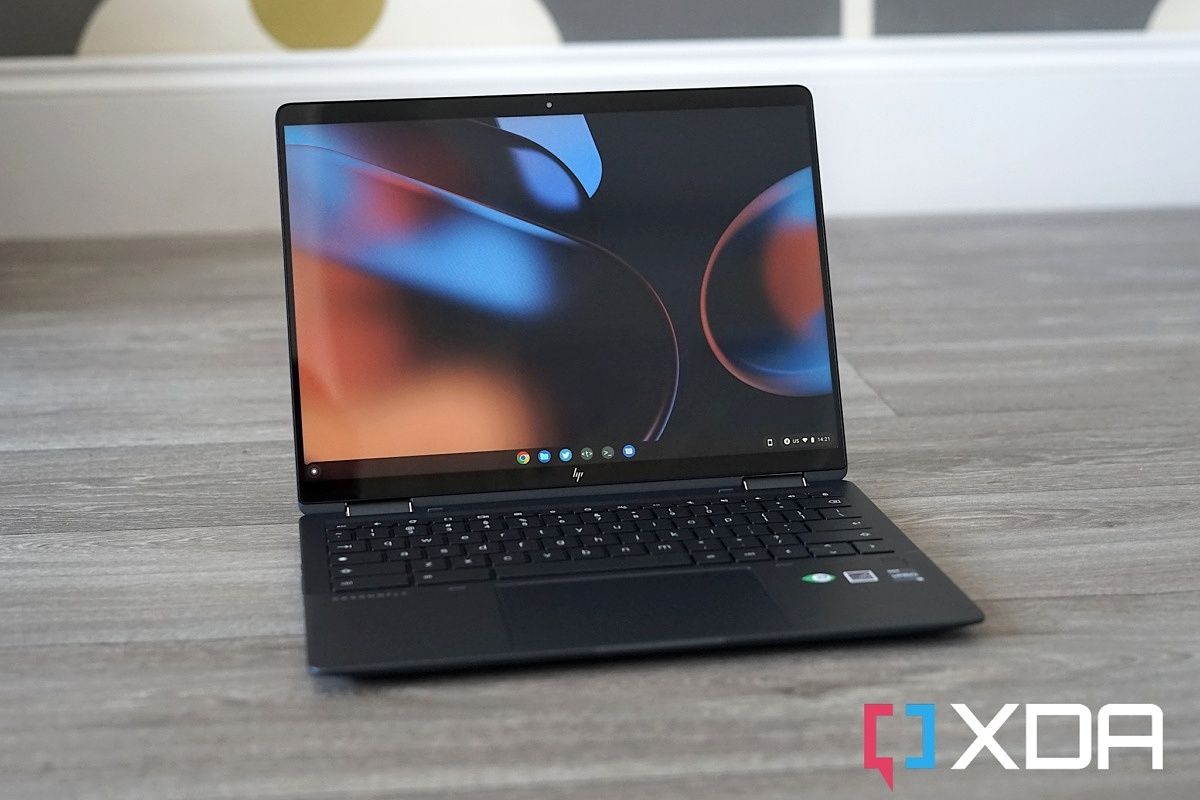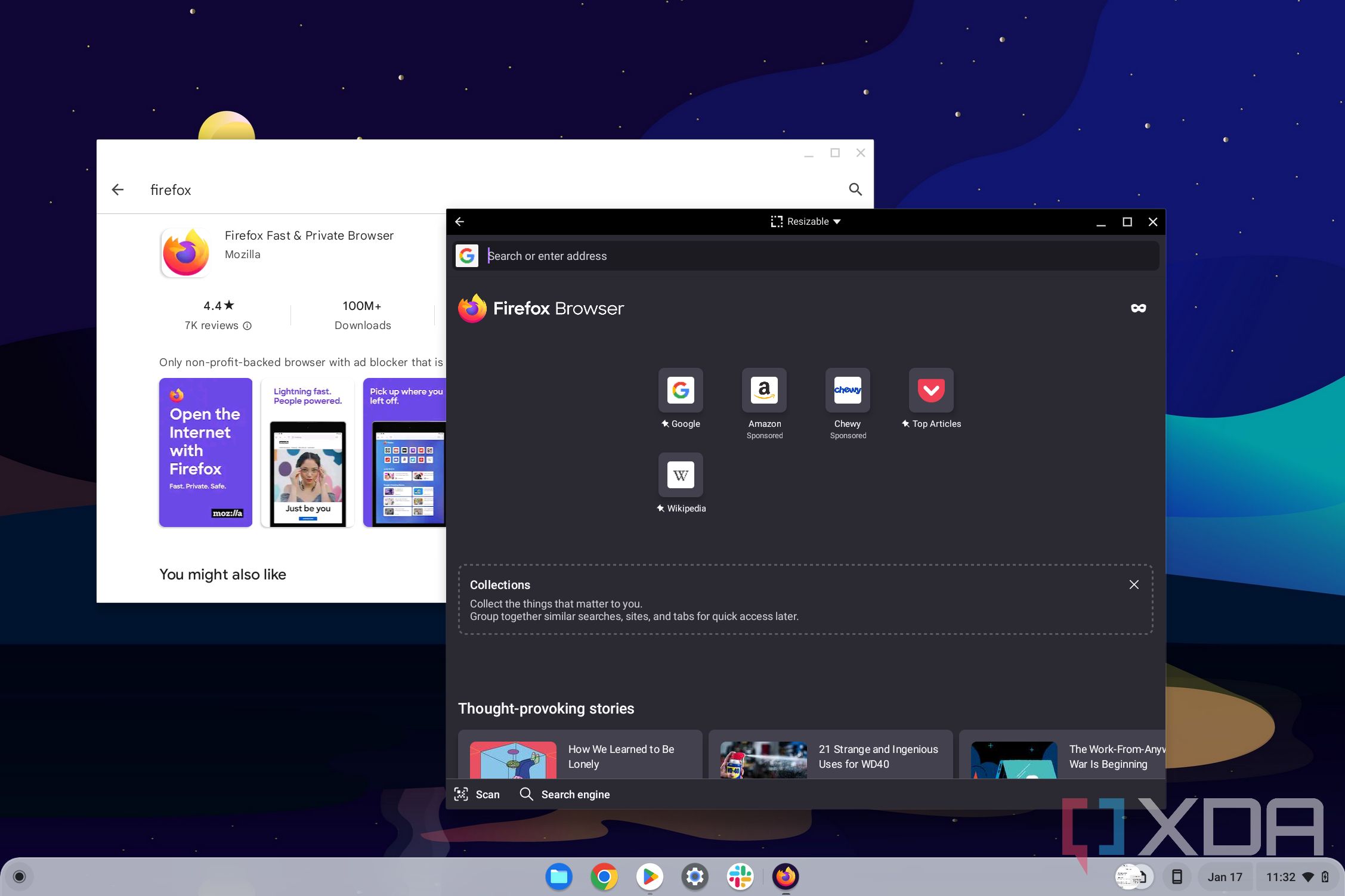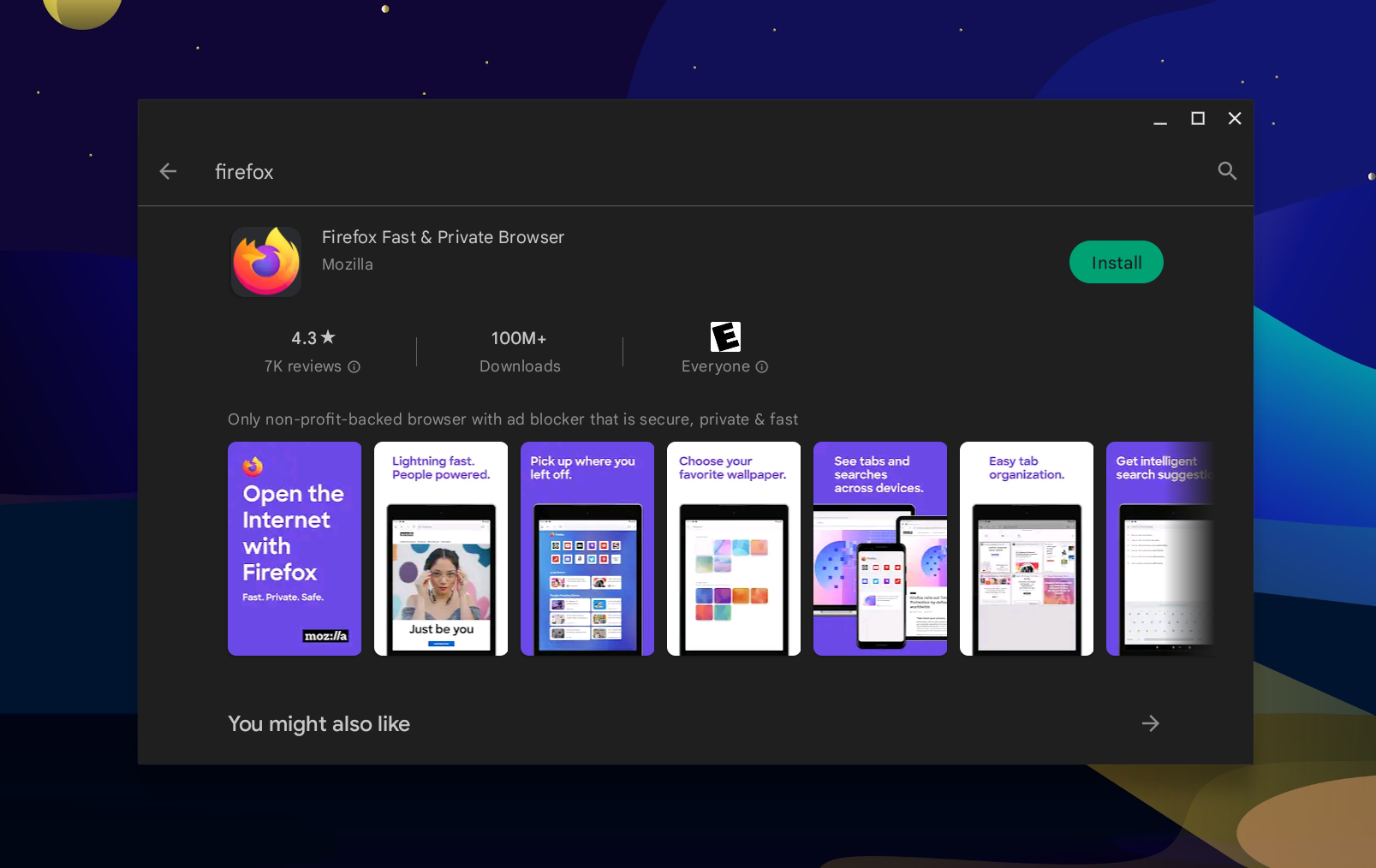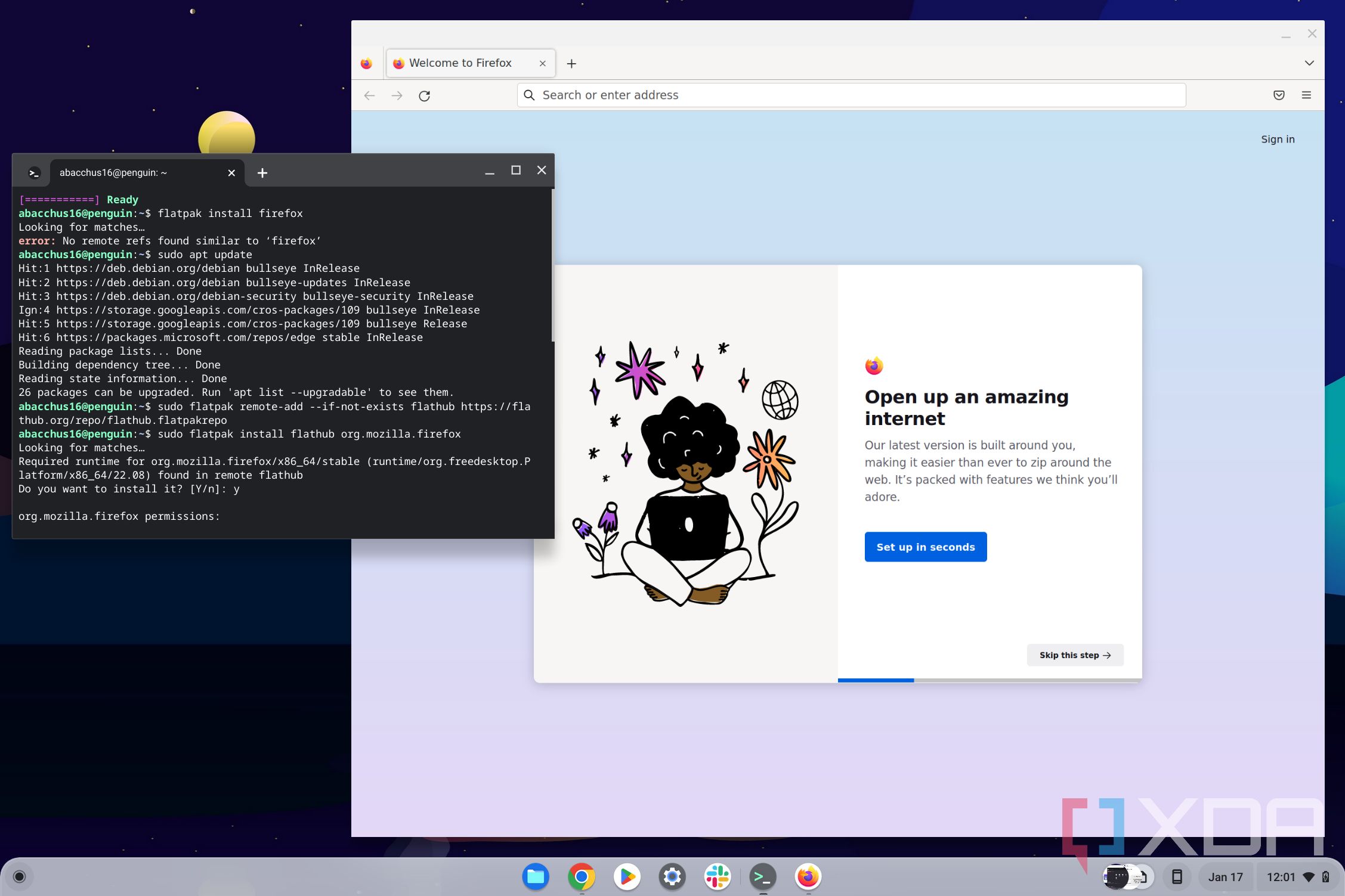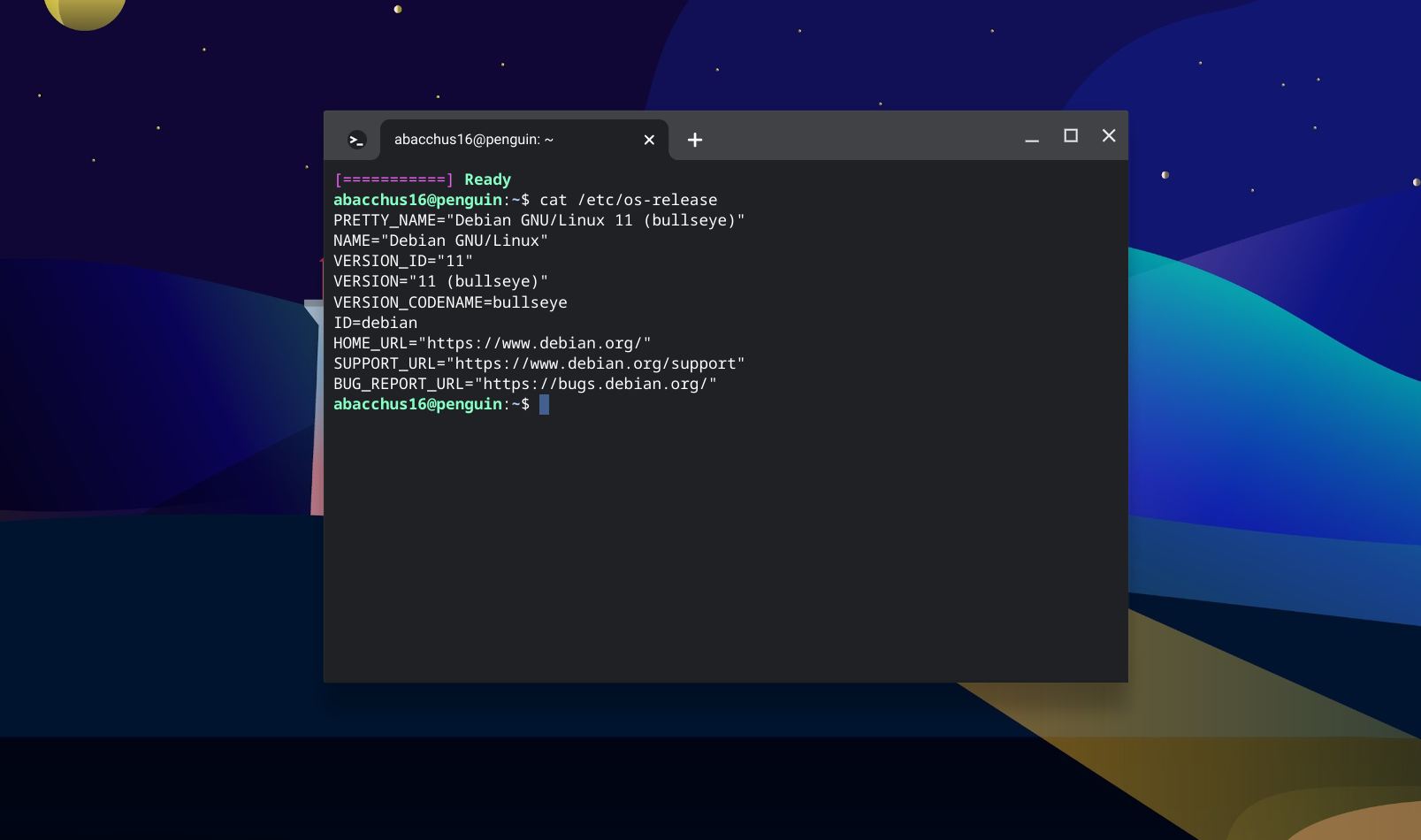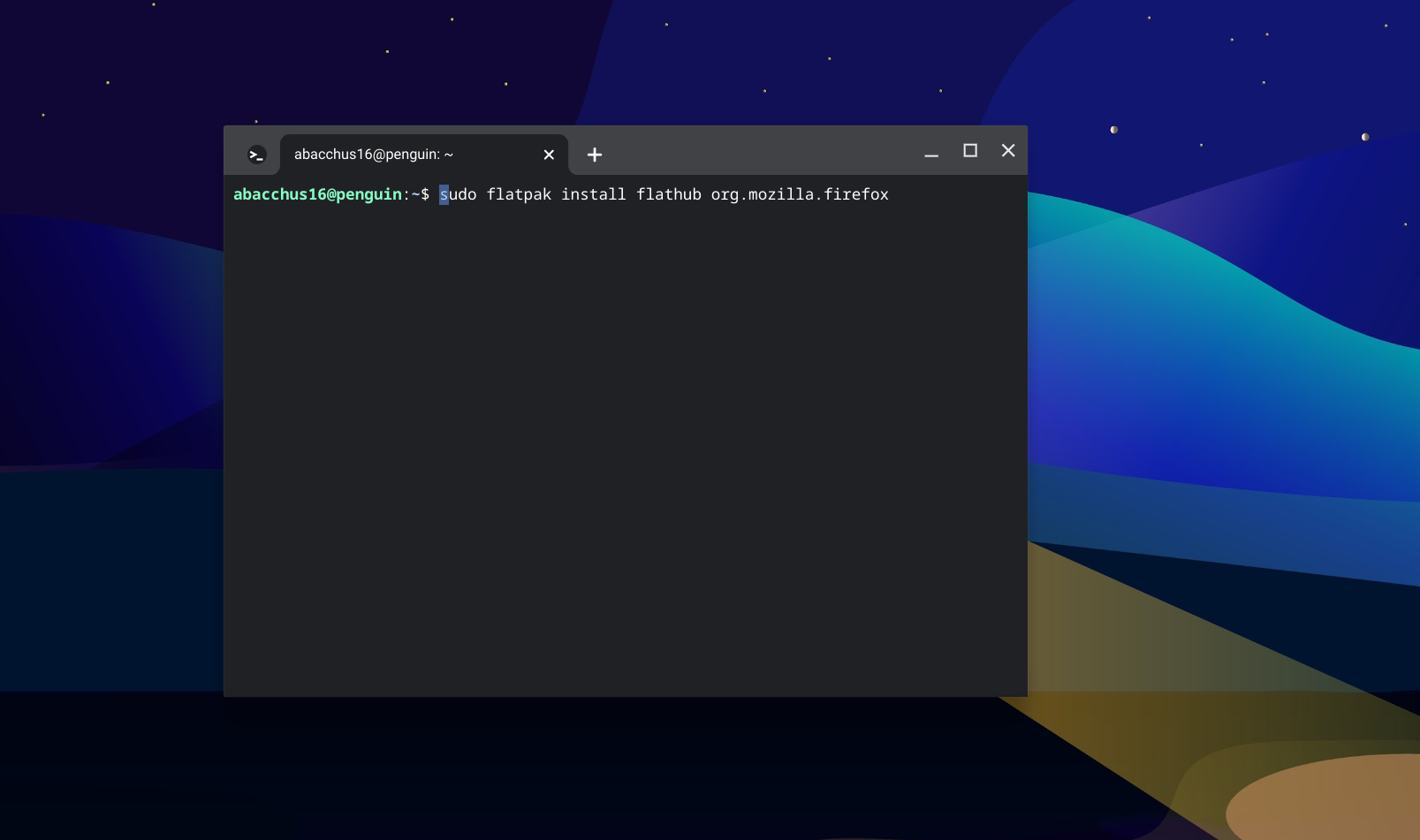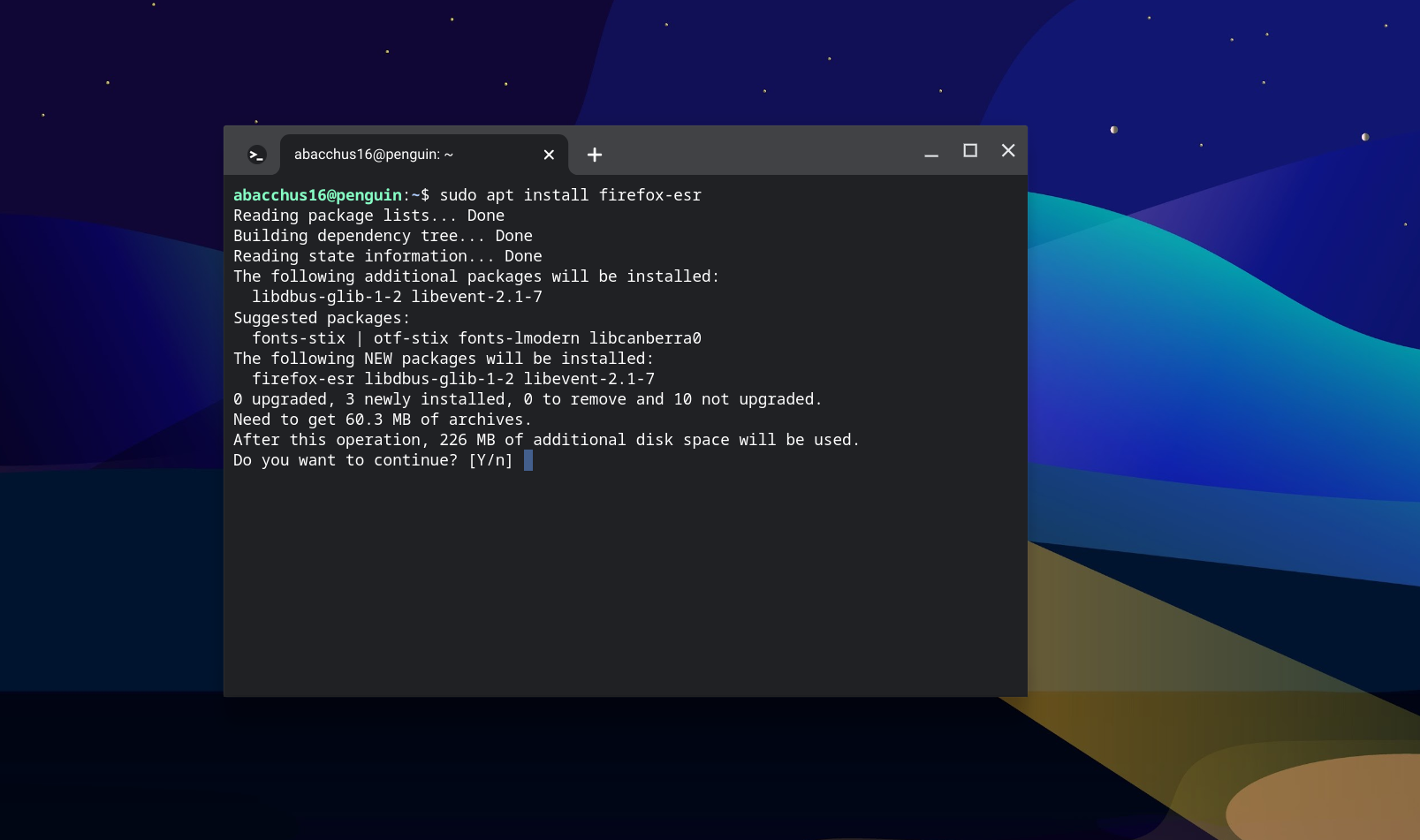Quick Links
Chromebooks might be powered by Google Chrome, but that doesn't mean you always have to use the Chrome web browser. If your Chromebook or ChromeOS tablet is powerful enough, you can actually install other web browsers and expand your horizons a bit, just like you can on a Windows laptop.
One of those web browsers you can use on ChromeOS is Firefox, which offers features like enhanced tracking protection. There's both the Linux version of Firefox and the Android version that can be used on most modern Chromebooks. It is why we're here for you today to explain how you can get started with installing Firefox on your Chromebook.
What you'll need
- Chromebook compatible with the Google Play Store, and Linux apps: The process in this guide requires enabling Linux, or running Android on your Chromebook. Most modern Chromebooks with x86 CPUs (Intel or AMD CPUs) running ChromeOS 80 or later work with this just fine. If you have a Chromebook with an Arm-based SoC from MediaTek or Qualcomm, you can't officially install the x86 Linux version and will have to use the Android app instead. You can try to install the x86 version, but it might not work the best.
- Access to the internet: Naturally, you need access to the internet to download the required files for Firefox.
- Administrator permissions: If your Chromebook is managed by your workplace or school, you won't be able to install Firefox on your Chromebook. You need administrator permissions to install Linux as well as Android apps.
Option 1 (easiest) Install the mobile version of Firefox from the Google Play Store
For most people, the easiest way to install Firefox on a Chromebook is to use the mobile Android version of the browser. This version is downloaded from the Google Play Store. Of course, you'll have to get used to the mobile layout of the Firefox app if you opt to go with this method. Your Chromebook will also need to be compatible with Android apps. Most Chromebooks work with this just fine.
- Click the launcher icon at the bottom left of your Chromebook screen.
- Search for Play Store.
- Launch the Play Store app.
-
In the search for apps & games box at the top enter the term Firefox.
- Click the green install button.
- Once done, Firefox should be added to your ChromeOS launcher.
- Click the launcher icon to the left of your screen and search for Firefox then click to launch it.
Again, at the first launch, ChromeOS will warn you that the Firefox Android app is designed for mobile. It might not resize or fit well on a Chromebook screen, and you might run into issues with web pages giving you the mobile version instead of a desktop version.
If you want to customize your Firefox experience a bit more, tap the top of the window where it says Tablet and choose the down arrow, and pick Resizable. Click Allow and then drag the Firefox window around to resize it to your screen.
Option 2 (advanced users) Install the Linux desktop version of Firefox
More advanced Chromebook users can install the desktop Linux version of Firefox for a classic web browser experience similar to using Chrome. As a prerequisite, we suggest checking out our guide to installing Linux apps on ChromeOS. Once you familiarize yourself with what to expect, you can get started with the steps below. Keep in mind, the first part of this guide is for systems with an x86 CPU, from Intel or AMD. For systems with an Arm-based SoC, the steps are different, and you can jump to the subsection below this one.
Installing the Linux version of Firefox on a Chromebook with x86 (Intel/AMD) CPU
- Open ChromeOS settings by clicking the time area and choosing the settings cog.
- Click the Advanced tab and choose Developers.
- Where it says Linux development environment choose the Turn on option and follow the settings on your screen.
- Open the terminal app on ChromeOS by clicking the launcher to the left of your screen and searching for then choose Terminal.
- Choose Penguin from the list.
-
Type the following command to confirm you have the latest Linux release: cat /etc/os-release
- If you see version 10 or higher, you're good to go. If not, type the following script to update, and then press enter: sudo bash /opt/google/cros-containers/bin/upgrade_container
- Once updated, you'll have to enable and install the Flatpak package format for Linux by typing out this code and pressing enter on your keyboard: sudo apt install flatpak
- Press Y on your keyboard to confirm and then hit enter. Allow the installation to complete.
- Type the following command: sudo flatpak remote-add --if-not-exists flathub https://flathub.org/repo/flathub.flatpakrepo
-
Type this command and press the enter button on the keyboard: sudo flatpak install flathub org.mozilla.firefox
- Accept by tapping Y on your keyboard and pressing enter. Allow the installation to complete.
- Press Y again, press enter and wait for Firefox to install.
- Launch Firefox from your ChromeOS Launcher! It will be under the Linux apps folder.
Installing the Linux version of Firefox on a Chromebook with an Arm-based CPU (Qualcomm/MediaTek)
Officially, Mozilla does not have listed documentation for installing Firefox on devices that have an Arm-based CPU. These devices like the Lenovo Chromebook Duet 5 have a MediaTek Kompanio or a Qualcomm Snapdragon 7c or 7c Gen 2 SoC. However, you can still technically install the Linux version of Firefox with the steps below. Just be warned you might run into compatibility issues.
- Enable Linux on your Chromebook by following steps 1-5 as seen above.
- Type the following command in a terminal: sudo apt update.
- Type: sudo apt upgrade.
- Hit the Y key on your keyboard, and press enter.
-
Type: sudo apt install firefox-esr and press enter.
- Hit the Y key on your keyboard and press enter.
- Launch Firefox from your ChromeOS Launcher! It will be under the Linux apps folder.
That's all there is for installing the desktop version and the Google Play Store version of Firefox on ChromeOS. As you can tell, this might take a lot of steps and patience, but if you don't want to use Chrome on your Chromebook, it's nice to have Firefox as an option. Once you sign in, you can even input your data from other versions of Firefox from a PC or a phone. Keep in mind, if you're a Microsoft fan, you even can install the Linux version of the new Edge browser on your Chromebook in this same way, too!

